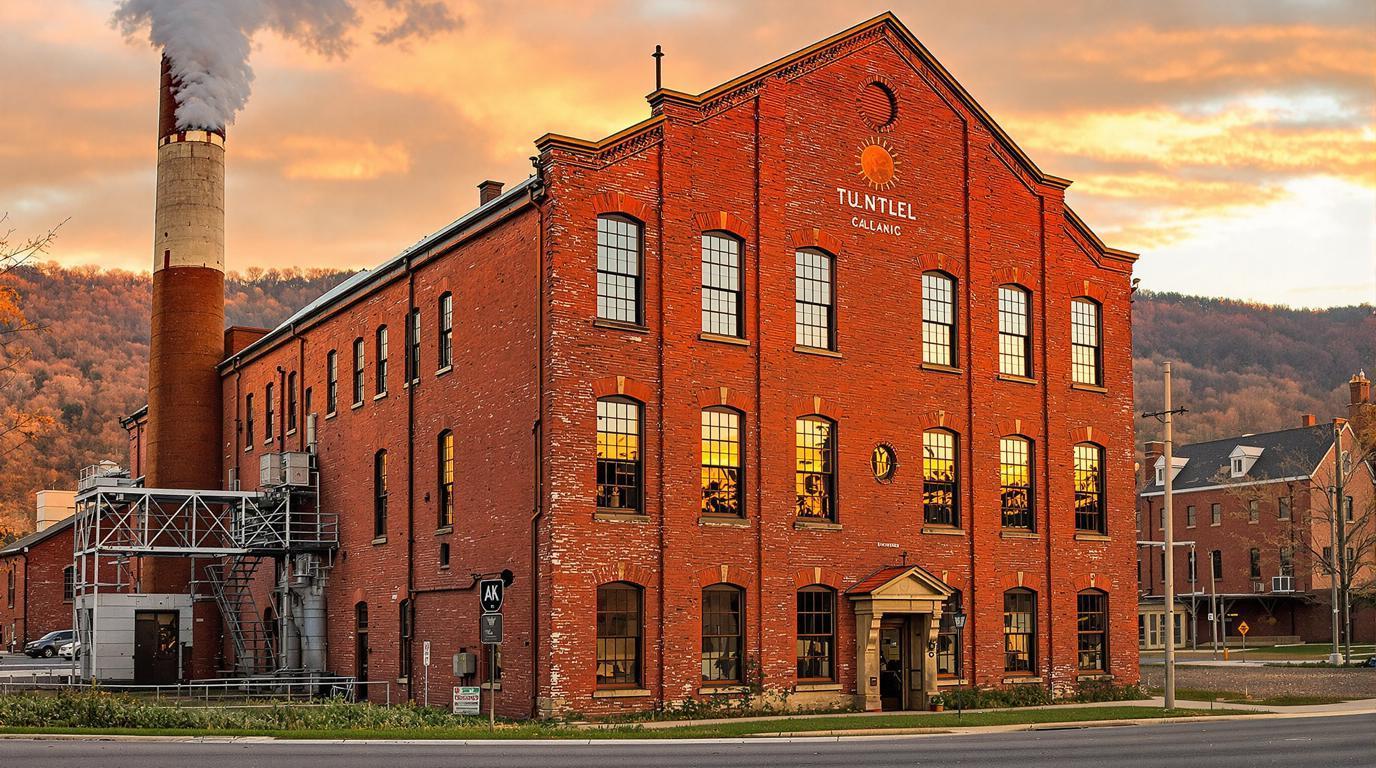Three hours into my Alabama textile hunt, I discovered something extraordinary. While most travelers rush past this Cumberland Plateau sanctuary toward Chattanooga’s tourist crowds, Fort Payne quietly holds the title “Official Sock Capital of the World” – a designation that once meant producing over 50% of America’s socks from 125+ mills employing 7,000 workers.
The 14,900 residents of this 1,079-foot elevation city guard secrets that even seasoned Southern explorers miss. Unlike the commercialized attractions 95 miles away in Chattanooga, Fort Payne offers something rarer: authentic industrial heritage wrapped in Appalachian charm, accessible yet undiscovered.
What struck me most wasn’t just the textile legacy, but how this sanctuary maintains its authenticity while sitting perfectly positioned between Birmingham’s urban sprawl and Lookout Mountain’s natural drama. This is the South’s best-kept industrial heritage secret hiding in plain sight.
The textile empire that rivals forgotten European mill towns
Where America’s sock revolution began in the 1990s
Walking through Fort Payne’s historic district, you’ll witness something remarkable: the preserved architecture of a textile boom that once dominated half the nation’s hosiery production. Unlike other industrial heritage towns that have lost their authentic character, Fort Payne’s red-brick mill buildings tell a story of American manufacturing prowess. The Mill Shop, operating 9 AM to 5 PM Monday through Friday, serves as both museum and working reminder of this textile empire that employed thousands before globalization shifted production overseas.
The authentic craftsmanship tourists never discover
Today, only a few specialty mills remain operational, but they produce something extraordinary: organic socks and custom textile products you won’t find in mass-market stores. Local artisans have transformed this industrial decline into boutique manufacturing that serves discerning customers nationwide. These hidden workshops offer tours by appointment, revealing techniques passed down through generations of Fort Payne families.
Hidden Cherokee heritage that defies mainstream tourism
The authentic cultural layer beneath industrial history
Fort Payne’s position in the Cumberland Plateau connects it to deeper Cherokee heritage that predates the textile boom by centuries. While nearby Lookout Mountain attracts crowds with commercialized attractions, Fort Payne preserves subtler cultural connections through local storytelling and preserved sacred sites. This layered history creates an authenticity that tourist-heavy destinations like Rome, Georgia simply cannot match.
Where geological wonder meets cultural preservation
The elevation advantage of 1,079 feet provides Fort Payne with cooler summers and stunning plateau views that most visitors never experience. Similar Appalachian sanctuaries charge premium prices for such geographic positioning, but Fort Payne remains accessible to authentic travelers seeking substance over spectacle.
The exclusive experience locals guard carefully
Secret access to Little River Canyon’s pristine wilderness
Fort Payne serves as the gateway to Little River Canyon National Preserve, offering hiking trails and swimming holes that remain largely undiscovered by mainstream tourism. Local guides share access points and seasonal secrets that transform a simple nature visit into an insider’s wilderness experience. The canyon’s geological formations rival more famous destinations without the crowds.
Authentic Southern hospitality without tourist inflation
Unlike Chattanooga’s tourist-priced restaurants and accommodations, Fort Payne maintains genuine Southern pricing and hospitality. Similar industrial heritage towns have discovered that authentic experiences often cost less than manufactured attractions while delivering deeper cultural connections.
Travel Note: Visit during spring or fall when the elevation provides perfect hiking weather and the textile heritage tours operate at full capacity. Local textile workers often share stories that reveal the human side of American manufacturing history.
Frequently Asked Questions
How does Fort Payne compare to other Southern textile towns?
Fort Payne uniquely combines active textile heritage with natural beauty access, unlike most former mill towns that have lost their industrial character or natural setting advantages.
What makes the sock capital designation authentic?
During the 1990s peak, Fort Payne produced over 50% of America’s socks from 125+ mills, earning official recognition that reflects genuine industrial dominance rather than marketing.
Can visitors access working textile facilities?
Several specialty mills offer tours by appointment, providing authentic glimpses into both historical techniques and modern artisan production methods.
How does the elevation affect the visiting experience?
At 1,079 feet, Fort Payne enjoys cooler summers and clearer mountain views than surrounding areas, enhancing both comfort and scenic value.
This textile sanctuary rewards travelers seeking authentic American industrial heritage without tourist crowds. In a region where manufactured attractions dominate, Fort Payne offers something increasingly rare: genuine cultural depth at elevation that enhances rather than exploits its remarkable history.
